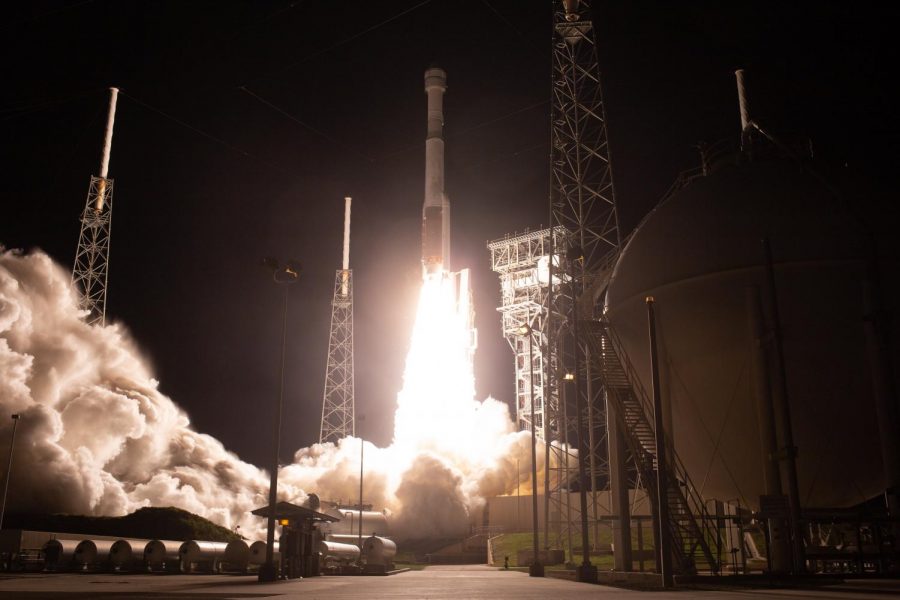Boeing and NASA Cut the Maiden Flight of the CST-100 Starliner Spacecraft Short
On Dec 20, a major anomaly on board the Starliner spacecraft caused NASA and Boeing to cut the Orbital Flight Test (OFT) short and landed the spacecraft on Sunday, Dec 22.
On Dec 20, an Atlas V N22 carrying the CST-100 Starliner launched from Space Launch Complex-41 or SLC-41. The launch comes after the inaugural SpaceX Crew Dragon Demo-1 mission in March. The Orbital Flight Test (OFT) was meant to be an unmanned flight to test the systems of the spacecraft and dock with the International Space Station (ISS).
As with all Atlas V rockets, the launch site was SLC-41 at Cape Canaveral Air Force Station. Cape Canaveral Air Force Station (CCAFS) is adjacent to NASA’s Kennedy Space Center. With the recent establishment of the US Space Force by the Trump administration, CCAFS is now controlled by the Space Force. However, no significant changes have been made yet.
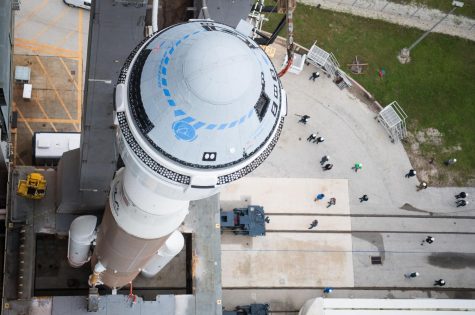
SLC-41 was built for the US Air Force in the 1960s and served the Titan rocket program from 1965 to 1999. From SLC-41, Titan rockets launched both pairs of NASA’s Mars Viking landers in 1975 and Voyager probes in 1977.
After 1999, Lockheed Martin reconfigured the Titan pad in order to serve the Atlas V rocket program, which it does to this day for ULA. ULA is a joint venture between Lockheed Martin and Boeing.
While SpaceX’s Falcon and Dragon Commercial Crew system are mated on their Transport Erector inside their Horizontal Integration Facility (HIF) at LC-39A, Starliner’s Atlas V is stacked on its Mobile Launch Platform (MLP) while half enclosed in the VIF. The crane lifts the first stage from its tracked transporters onto the Mobile Launch Platform or MLP, where it is surrounded by work platforms.
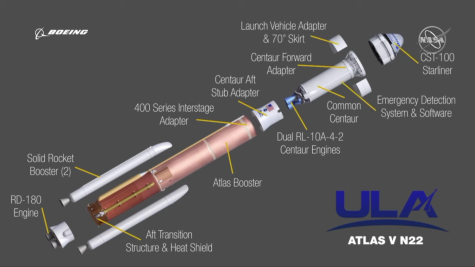
On Nov 8, a Dual Engine Centaur (DEC) was lifted from its transport and stacked on the first stage. Two of the venerable RL-10 engines are needed to lift the Starliner and its Service Module (SM), which are heavier than any previous Atlas V payload. This is the first time a DEC has flown on Atlas V, and the first DEC since the a flight on an Atlas III rocket in 2004.
The OFT mission is also the first time ULA has launched the N22 variant of the Atlas V. The two RL-10 engines give the rocket the last digit in its configuration designation of Atlas V N22, where the N stands for no payload fairing and the first “2” designates the two solid rockets attached to the first stage.
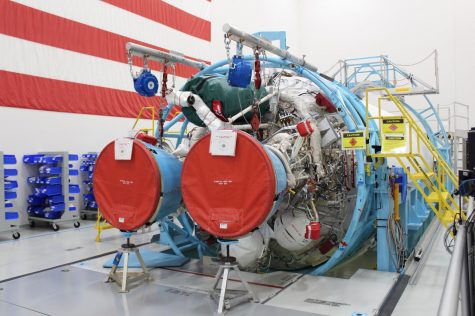
Part of the reason the dual engine Centaur was flown was in order to make an abort scenario survivable. Also, ULA and Boeing added the Emergency Detection System (EDS), which is there to monitor the rocket for any emergencies which would then trigger the launch abort system on Starliner.
These Aerojet Rocketdyne AJ-60 rocket motors were lifted and attached next, although their nose cones waited in storage. These AJ-60s augment the capacity of the Atlas V core for the heavy Starliner payload.
Instead of the standard Atlas-V payload fairings, this Starliner capsule has a two piece ejectable nose cone to protect the docking mechanism from the weather and launch conditions. It also has an aerodynamic skirt hanging off the bottom of the SM and surrounding the Centaur.
This was attached when the Starliner, prepared for launch in the old Space Shuttle Orbiter Service Building-3 (now called the CC3P). The Starliner was then rolled from the CC3P to the VIF. At the VIF, it was craned on top of the DEC on Nov 21.
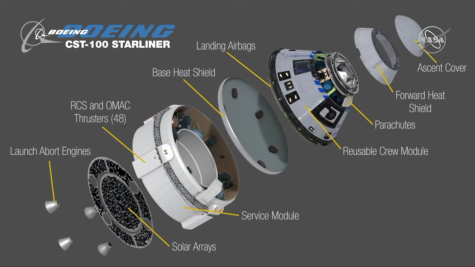
Pushed by two locomotives, the Starliner and Atlas were rolled to the launch pad in over an hour on Dec 3. Whereas the Falcon 9 rocket is tested by igniting the engines, for which the payload is left in its HIF, the Atlas undergoes a Wet Dress Rehearsal (WDR), where it is fully fueled and taken through a countdown, which is stopped just before engine ignition.
After declaring the Dec 6 WDR a success, Starliner and the Atlas V were pulled back to the VIF. Once inside the VIF, nosecones were installed on the solid rockets and the RCS propellent was loaded into the DEC. The full stack was ready for its maiden voyage.
On Dec 18, the Starliner and the Atlas V was rolled out on the MLP to the pad for the final time. Soon after that, Boeing’s new Crew Access Arm was swung into space.
Engineers and technicians walked out to the Starliner and opened the hatch, just as they would do to load the crew for operational flights to the ISS. They checked on the anamorphic test subject, dubbed Rosie the Rocketeer. Then they closed the hatch and evacuated the access tower.
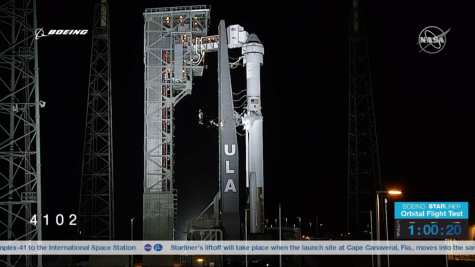
The countdown began at 7:16pm EST on Dec 19. Not long after, the launch controllers at ULA conducted a series of systems tests on the launch vehicle.
The launch countdown tests included steering checks on the Atlas V’s RD-180 engine, and both RL-10 engines on the Centaur upper stage. Minor checks also occurred with valves and other vital systems.
The final fueling started at T-6 hrs, or six hours before the launch pad was to pass under the orbit of the ISS, which defines the instantaneous launch window. If the rocket isn’t ready it would have to wait until the same orbital configuration occurred 24 hour later, however the rocket would be ready.

Fueling lasted until T-4 hours and five mins. The fueling included RP-1 rocket grade kerosene (first stage) and Liquid Oxygen (first and second stages). The liquid Hydrogen for the second stage was loaded and topped off constantly until near launch time.
The final preparations for Starliner began around the T-3 hour mark. The blue team closed the main hatch on Starliner at the T-1 hour and 25 min mark, which was followed by leak checks and pressurization of the spacecraft for flight.
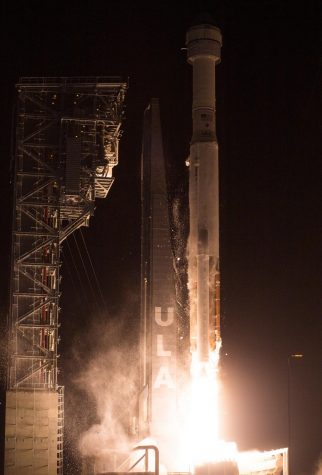
At T-15 mins, Starliner’s power was switched from ground power to internal power. Soon followed the retraction of the crew access arm.
The countdown proceeded smoothly, with a round of “Go!” voted from the Launch Vehicle Poll capped by the launch director declaring “LD is Go, and LC you have permission to launch” at T-6 mins.
The launch controllers were operating at the Atlas Spaceflight Operations Center, or ASOC. The terminal countdown began at T-4 mins prior to launch.
At T-2.7secs, the Atlas-V’s dual chamber 860,000 lbf thrust rocket engine ignited. Unlike the nine Merlin D engines on the Falcon 9, this single engine is built in Russia by NPO Energomash. It would burn for around six mins, far longer than around two mins for the Merlins.
The RD-180 is closely related to the RD-181 which is a single chambered version of the RD-180 and is used on Northrop Grumman’s Antares rocket. The RD-180 was first flown on the Atlas III in 2000 and now the Atlas V.
At T-0 the two Aerojet solid rockets ignited with a total thrust of 379,600 Lbs. Finally, the Atlas V rose swiftly from the pad at T+1.1secs.
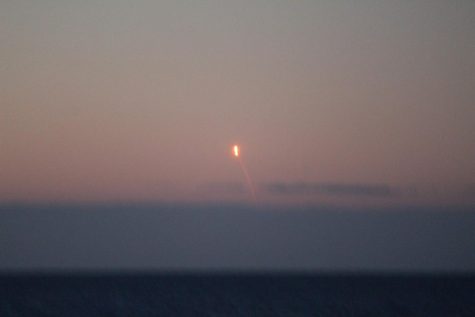
At T+6.2 seconds, the Atlas V made a coarse adjustment using both pitch and yaw to align Starliner with the path of the ISS.
The Atlas V passed through the point of maximum dynamic pressure (Max-Q) at T+41.8 secs. During Max-Q, the rocket passed through the speed of sound (Mach 1).
The launch marked the 66th Atlas V launch and the 93rd Atlas launch since the first Atlas rocket took to the skies in 1965. This was also the first human-rated Atlas rocket launch since the Mercury-Atlas 9 mission on May 15, 1963.
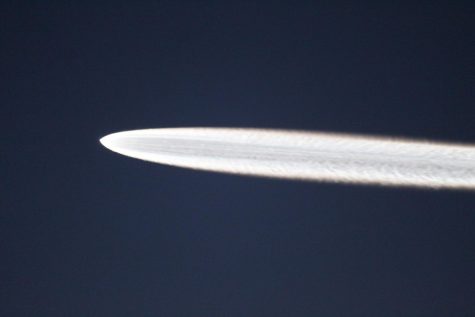
That mission carried Cordon Cooper into space on his Mercury capsule named Faith 7. The launch was also the first crew-rated spacecraft launch to launch from CCAFS since Apollo 7. Apollo 7 launched on Oct 11, 1968 from LC-34.
The twin solid rockets burned out at 2:35 seconds, dropping away 40 seconds later as the air thinned enough to prevent recontact with the rocket. Booster Engine Cutoff (BECO), or the shutdown of the RD-180 main engine occurred at T+4:29 secs.
The Atlas V first stage separated 36 secs after engine shutdown. Not long after, the aerodynamic nosecone on the top of the Starliner separated.
At T+4mins and 45secs, the DEC’s two RL-10 Liquid Oxygen/Liquid Hydrogen engines ignited. Unlike the LOX-RP1 Merlin vacuum engine on the Falcon 9, a variant of the first stage engines with 200,000 lbs of thrust, the RL-10-4Cs, are derived from the RL-10A. Both RL-10s propelled the Centaur and Starliner skyward with 400,600 lbs of thrust combined.
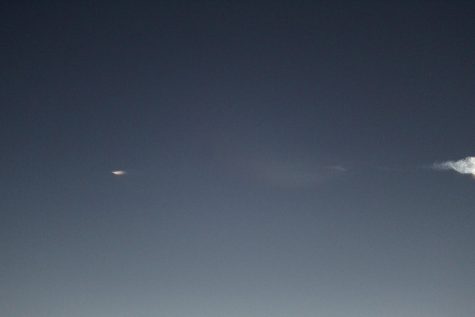
The RL-10 engines used in the Centaur-upper stage have a long history. The RL-10 engine, which is manufactured by Aerojet Rocketdyne was first flown in 1963. It has flown, or will fly on numerous launch vehicles including Atlas rockets, Delta rockets, Northrop Grumman’s future OmegA rocket, and NASA’s future SLS rocket.
At T+5 mins, the aeroskirt on the Centaur was jettisoned. The aeroskirt provides aerodynamic stability to Starliner. By this time, Starliner was moving northeast, downrange of Florida, and parallel to the east coast of Georgia and South Carolina.
The lower thrust and the need for safe abort modes had the DEC fly nearly horizontally at around 100 km altitude. It was pointed well above the flight path, with a high angle of attack, to maintain altitude as it accelerated.
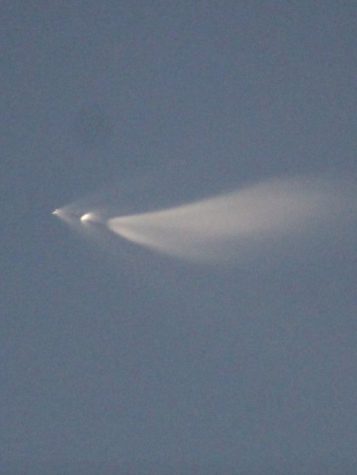
The Centaur turned off its engines at a point called Main Engine Cutoff (MECO) at T+14mins. This left the Starliner and the Centaur on a precisely targeted, 98 by 39 mile sub-orbital trajectory at an inclination of 51.6 degrees. The trajectory would lead the Centaur to intentionally burn up in the atmosphere off the west coast of Australia around 30 minutes later.
“We flew the flattened low-G trajectory, uniquely for crew safety purposes perfectly,” said Tory Bruno, CEO of United Launch Alliance (ULA).
Another contrast to the SpaceX Demo-1 launch was seen in the live broadcast. While SpaceX conducted an Emmy award winning, “data rich” broadcast, displaying velocity and altitude on top of images from ground and onboard cameras, the Boeing/ULA broadcast had none.
Aside from noting the milestones, much of the time was spent looking at the back of launch controllers’ monitors, or people intently watching data displays that could not be seen. While Boeing did see events like the Starliner separation from the Centaur, they were not shared in real time.
Three mins after MECO, the Starliner separated from the Centaur upper-stage. “At the point of separation of the spacecraft, we achieved those separation parameters and in fact literally hit a bullseye with several parameters in the vanishing decimal points of accuracy,” said Bruno.
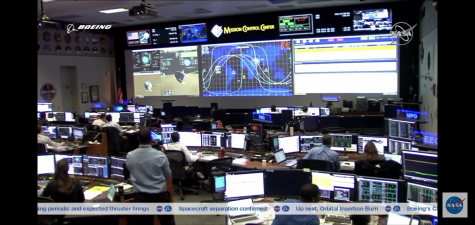
At this point things went arry. The Starliner had tried to pull the time since launch, the Mission Elapsed Time, (MET) from the Atlas-V guidance and Emergency Detection System. Instead, it pulled a value that was off by 11 hours.
This MET anomaly sent the capsule into a confused mode, just when it needed to do its Orbital Insertion (OI) burn using it’s powerful OMAC engines. The goal of the burn using the OMAC engines was to raise Starliner’s sub-orbital trajectory into an orbital one. Rapid and erratic firings of its Attitude Control System rockets could be seen on the display behind the launch controllers.
The expected hand-off of communications with the ground from one TDRS satellite to another was complicated by the confused state and pointing of the capsule. By the time contact was established, about a quarter of the maneuvering fuel had been expended, and the spacecraft had missed its orbit insertion burn. The attitude control rockets had fired for so long operational limits were exceeded, and at least one went off-line temporarily.
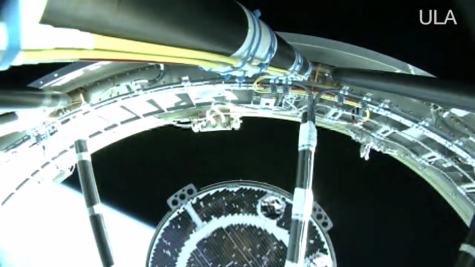
Only quick action by ground controllers at the Starliner Mission Control Center (MCC) at the Johnson Space Center in Houston, TX enabled a burn to enter an orbit sufficient to prevent an immediate reentry. If the controllers in the MCC had been unable to respond properly, the spacecraft would have reentered the Earth’s atmosphere over the Indian Ocean near Australia. In that case, the spacecraft would have survived due to aerodynamic forces.
With insufficient fuel to meet NASA’s safety requirement for approaching the ISS, the mission was realigned to go directly to the test of reentry and landing on Sunday. The Expedition 61 crew on the ISS therefore will have to receive their Christmas gifts after they return from space in 2020.
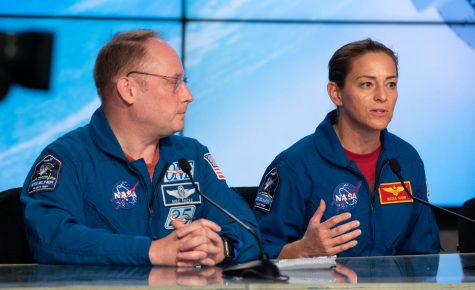
“We saw a great launch we watched the OI [Orbital Insertion] burn as it played out and we kinda imagined ourselves as if we were onboard. In fact, I even had my flight checklist that we have been developing right in front of me as I watched what was going on,” said NASA Astronaut Mike Fincke (assigned to the future Boeing Crewed Flight Test, or CFT).
Over the rest of Friday and Saturday, Dec 21, the Spacecraft conducted two burns to reach a circular orbit of 250 km above the Earth. In orbit, Boeing conducted as many inflight objectives as possible.
Starliner was able to accomplish some minor docking test objectives. These tests included establishing communications with the distant ISS, activation of the docking ring, the star tracker system, the Vision-based Electro-optical Sensor Tracking Assembly or VESTA, and the Guidance Navigation and Control system (GNC). VESTA is designed to help a crew dock with the ISS.
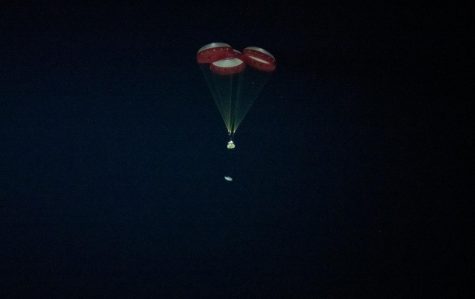
Since Starliner had to use 28 of its smaller thrusters from the service module to reach and raise the spacecraft’s previous orbit. The thrusters were overworked, causing some issues. Controllers had to shut one thruster down but the other ones worked fine in the end.
At 7:23am EST on Dec 22, Starliner conducted its deorbit burn to bring it back to the US. This was soon followed by the separation of the Service Module at 6:26am EST.
Next, the spacecraft screamed into the Earth’s atmosphere at around Mach 25 (25 times the speed of sound) beginning at 7:53am EST. Starliner traveled over Mexico’s Baja peninsula, and west of El Paso, TX during reentry.
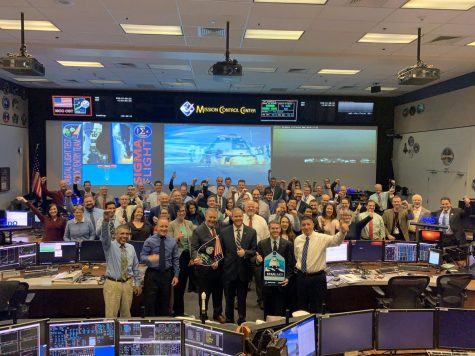
Once Starliner was at around 30,000 feet in altitude, the drogue chutes were deployed, initially slowing down the capsule. Next, the spacecraft heat shield was jettisoned.
As the spacecraft got closer to the desert floor, the three main parachutes deployed and the base heat shield was jettisoned. After the heat shield was deployed, airbags at the base of the capsule were deployed. The airbags helped soften the landing.
Finally, at 7:58am EST, Starliner touched down on the desert floor at the White Sands Missile Test Range in New Mexico. Soon after, the recovery crews converged on the capsule. “It was spectacular,” said NASA Astronaut Suni Williams.

In all, the OFT mission lasted 2 days, 1 hour, 21 minutes, and 19 seconds. Starliner flew a total of 33 orbits as well.
“Thanks to NASA for giving us a shot. Apologies to ISS crew for not delivering Christmas presents. We have a good design, don’t see anything wrong with this spaceship, ” said the senior vice president for space and launch at Boeing, Jim Chilton.
After landing, recovery crews cleared the landing site of any hazards and deemed the site “safe.” The crews also “grounded” the spacecraft to dissipate any remaining static electricity. At 9:01am EST, the recovery crews opened the Starliner’s hatch.
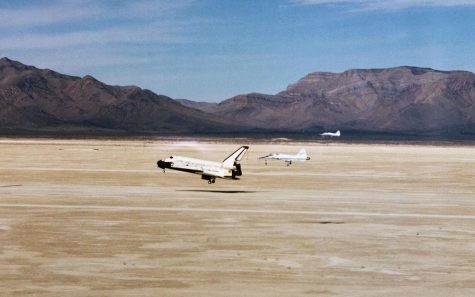
The landing of Starliner in White Sands marked the first time an American orbital capsule landed on land. Starliner is also the second NASA spacecraft to land at White Sands.
On March 30, 1982, Space Shuttle Columbia landed at White Sands after STS-3 carrying NASA Astronauts Jack Lousma and Gordon Fullerton. Originally, Columbia was supposed to land at Edwards Air Force Base in California, however weather forced Columbia to change the landing to White Sands.
After hatch opening, the crew gathered some cabin atmosphere data. The crew slated for the Crew Flight Test (CFT) including Chris Ferguson, Mike Fincke, and Nicole Mann were able to look into the spacecraft.
Suni Williams, who is slated to fly on the second Starliner crewed flight was also able to see the spacecraft. The Starliner vehicle which flew on OFT will fly on the mission assigned to Williams.
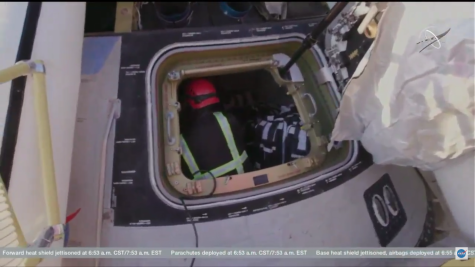
Rockwell North America, now a part of Boeing Space, built the six Orbiters for NASA’s Space Shuttle program. Like the Orbiters, which had names such as Discovery, Challenger, Endeavour, Enterprise, Columbia, and Atlantis, the first flown Starliner will be named “Calypso” according to Suni Williams.
The Starliner is also reusable like the Space Shuttles. However, certain things like the bottom heat shield, among others will have to be replaced.
In the coming weeks and months, Boeing and NASA will receive their respective cargo which was on the spacecraft. Starliner will be shipped back to NASA’s Kennedy Space Center for the ongoing investigation and refurbishment.
This anomaly now makes it too close to call to say whether Boeing or SpaceX will launch the first crewed flight test for the Commercial Crew Program. Whoever gets to the ISS first will be able to take an American flag (left by the crew of STS-135 on the final Shuttle flight in 2011) back to Earth.
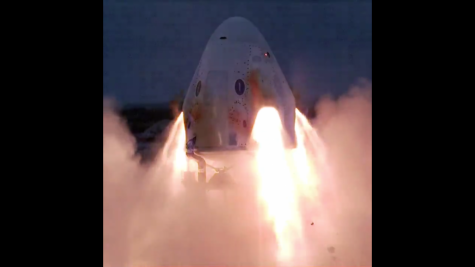
The in flight abort test (IFA) is scheduled for NET Jan 11. The IFA will consist of a Crew Dragon spacecraft firing its SuperDraco abort motors to eject off of a Falcon 9 rocket during Max-Q. During the event, the individual Falcon 9 booster will break-up mid flight and the Crew Dragon capsule will splash down in the Atlantic Ocean.
If the IFA is successful, the first crew flight, called Demo-2 with NASA Astronauts Doug Hurley and Bob Behnken will fly to the ISS in quarter two of 2020. The first crewed flight of Starliner, CFT will also be in 2020. However, the exact date is yet to be determined because of the ongoing investigation into the MET anomaly during the OFT flight.


